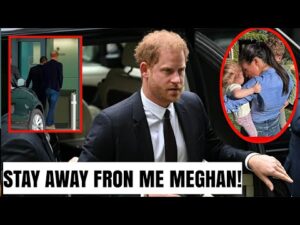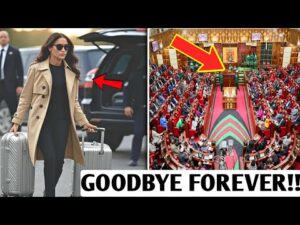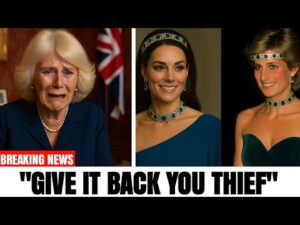Camilla Freezes as Kate Wears Diana’s Most Powerful Heirloom in Public

A Crisp London Morning
It began with a single photograph, a crisp London morning. The sky was overcast but forgiving, casting a soft gray filter over the gates of Windsor. Dozens of photographers had already gathered, lenses pointed toward a single ornate doorway. This was not an official state event; it was not coronation day, nor was it an anniversary or national celebration; it was simply a royal appearance, or so everyone thought, but within minutes of her stepping out of the car, Catherine, Princess of Wales, transformed an ordinary outing into an unforgettable spectacle that would send the monarchy’s internal structure into a quiet tremor. She wasn’t draped in ceremonial robes; she wasn’t flanked by security in military regalia; she didn’t make an announcement; all she did was wear a necklace.
A Sapphire and Diamond Choker
Before we continue, please hit the like button, subscribe to the channel, and turn on the notification bell for updates. Before we continue, please hit the like button, subscribe to the channel, and turn on the notification bell for updates. But not just any necklace: This was a sapphire and diamond choker, iconic, unmistakable, and hauntingly familiar to millions, a piece once considered sacred, shrouded in both adoration and pain. It was the same choker that Princess Diana had worn at the height of her royal stardom during state dinners and foreign visits at fundraisers in galas. The image of Diana donning that very necklace paired with her off-the-shoulder velvet gowns and her haunted smile was burned into public consciousness. The necklace was not jewelry; it was a statement, a scar, a memory, and now it rested on the collarbone of the woman whom many believe is walking directly in Diana’s footsteps.
“I Want It Back.”
As flashbulbs exploded and journalists whispered into recorders, one figure inside the palace reportedly stood motionless, watching the coverage unfold in real time. Her tea had gone cold; her fingers trembled around the porcelain, and according to an anonymous palace aide, her lips parted ever so slightly as she muttered the words, “I want it back.” That figure was none other than Queen Camilla.
A Seismic Gesture
To the untrained eye, this moment might appear trivial, a minor stir over fashion, but for those who understand the labyrinth and politics of royal image, lineage, and rivalry, the sight of Kate wearing Diana’s most treasured heirloom was a seismic gesture, a move interpreted by many not just as a tribute to the past, but as a claim to the future, and in the shadows of that gesture, old wounds reopened. Why would Camilla, queen consort, the reigning monarch, be so shaken by a single necklace? What was it about this specific piece that triggered a reaction strong enough to inspire palace whispers, a rare emotional outburst, and a deluge of speculation from the press? And more importantly, how did such a private grievance spiral into what insiders are now calling an unspoken war of symbolism between the queen and the future queen?
This Story Is About Power and Ghosts
This story is not about jewelry; this story is about power and ghosts. From the moment Diana entered the royal fold in the 1980s, she was more than just a princess; she was a phenomenon. Her style, her presence, her vulnerability, her heartbreak, all of it became mythologized, and when she died, that mythology only intensified. Every item she wore, every accessory she favored became part of her legend. When Kate married William, the world saw glimmers of Diana in her, and the palace leaned into that resemblance, knowing how deeply the public still loved their lost princess.
The Burden of Public Resentment
But while the public embraced this continuation, others inside the royal house felt differently. Queen Camilla has long carried the burden of public resentment. Once vilified as the “other woman,” Camilla spent decades rebuilding her image, first as Charles’s partner, then as a loyal, dependable royal figure. She worked behind the scenes, took on quiet charitable roles, and avoided the spotlight whenever possible. Slowly, begrudgingly, the public began to accept her, but what happens when acceptance is challenged by a new wave of affection, not for her, but for the one she replaced?
A Complicated History
According to sources close to the palace, the necklace Catherine wore that morning had a complicated history. It was originally part of a royal set gifted by the Queen Mother to Princess Diana as a wedding present. Diana was said to cherish it above all other pieces; it became synonymous with her elegance and poise, and for many, it symbolized the bright yet tragic chapter of her life within the royal family. After her death, many of her personal belongings were carefully preserved, redistributed among family members, or locked away entirely. Some pieces, however, remained contested.




